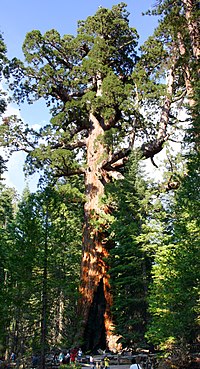
Photo from wikipedia
Plant growth-promoting bacteria (PGPB) have received much attention in recent years due to their ability to interact with plants and remediate contaminated soil. This research aimed to assess the potential… Click to show full abstract
Plant growth-promoting bacteria (PGPB) have received much attention in recent years due to their ability to interact with plants and remediate contaminated soil. This research aimed to assess the potential synergistic effect of three rhizobacterium strains; Enterobacter cloacae RCB980 (A3), Klebsiella pneumonia kpa (A4), and Klebsiella sp XT-2 (A7) in the remediation of cadmium (Cd) contaminated soils using Pennisetum giganteum plant. P. giganteum seedlings were transplanted into pots with seven different concentrations of Cd (0, 25, 50, 75, 100, 150, and 200 mg/kg), and the rhizosphere treated with combinations of bacteria A3, A4, and A7, for 60 days. Plant height, shoot and root biomass, chlorophyll content, bioaccumulation (BAF) and translocation factors (TF) were then determined. Root and shoot BAF for plants inoculated with bacteria strains at soil Cd concentrations of 25 and 50 mg/kg were all above 1.0 whereas TF values were greater than 1.0 only at 25 mg/kg Cd concentration. The study revealed that the application of double and triple strain consortium of bacteria significantly enhanced plant growth parameters and phytoremediation as compared to single strain. These results suggested that the strains had the synergistic potential to be utilized in enhancing P. giganteum growth and phytoremediation of Cd stressed soils.
Journal Title: Applied Ecology and Environmental Research
Year Published: 2021
Link to full text (if available)
Share on Social Media: Sign Up to like & get
recommendations!